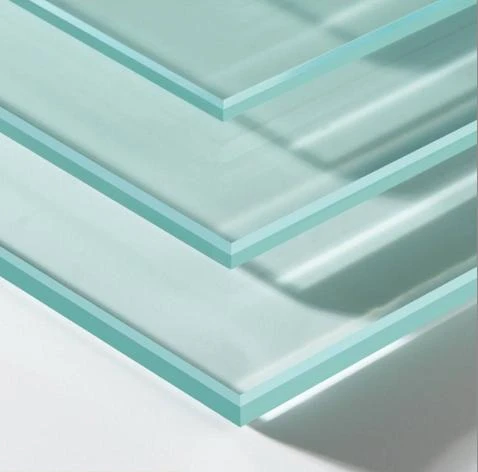Understanding Heat Reflective Glass A Modern Solution for Energy Efficiency
In recent years, the significance of energy efficiency in buildings has gained unprecedented attention. One of the innovative materials making waves in architectural design and construction is heat reflective glass. This specialized type of glass serves as a practical solution to combat excessive heat and enhance energy performance in both residential and commercial environments.
What is Heat Reflective Glass?
Heat reflective glass is a type of glazing that is designed to reflect a substantial amount of solar radiation while allowing natural light to penetrate the interior. This is achieved through a thin coating, typically made of metallic substances, that is applied during the manufacturing process. The primary role of this coating is to reduce the amount of infrared radiation entering through the glass, which can significantly lower indoor temperatures, especially during hot weather.
Benefits of Heat Reflective Glass
1. Energy Efficiency One of the most significant advantages of heat reflective glass is its ability to enhance energy efficiency. By reflecting solar heat away from the building, it reduces the reliance on air conditioning systems. This not only leads to lower energy bills but also decreases the overall carbon footprint of the building.
2. Comfort Heat reflective glass contributes to a more comfortable indoor environment. By minimizing heat gain, it helps maintain a consistent and pleasant temperature, thus enhancing the overall comfort of occupants. This is particularly valuable in commercial spaces where customer comfort can significantly influence purchasing behavior.
3. Glare Reduction Excessive glare from sunlight can be a nuisance, especially in office spaces where computer screens are in use. Heat reflective glass plays a crucial role in minimizing glare, allowing for better visibility and a more productive work environment.
heat reflective glass
4. UV Radiation Protection Beyond heat, heat reflective glass also serves as a barrier against harmful ultraviolet (UV) rays. Prolonged exposure to UV rays can not only fade furnishings and artwork but also pose health risks to building occupants. By blocking a significant portion of UV radiation, heat reflective glass helps in prolonging the lifespan of interior elements and safeguarding the health of individuals.
5. Aesthetic Appeal Available in various tint levels and finishes, heat reflective glass can be integrated into a wide range of architectural designs. Its sleek appearance not only enhances the visual appeal of buildings but also aligns with modern design principles.
Applications
Heat reflective glass finds application in numerous settings. It is commonly used in commercial buildings such as offices, retail outlets, and hospitals where energy efficiency is paramount. In residential buildings, it serves a dual purpose of energy efficiency and aesthetic enhancement. Additionally, it is increasingly becoming a popular choice for schools and educational institutions, where maintaining a conducive learning environment is essential.
Conclusion
In summary, heat reflective glass is transforming how we think about energy efficiency in buildings. As the world gravitates towards sustainability and environmental responsibility, integrating such innovative materials into architectural designs is crucial. Heat reflective glass not only serves practical purposes—like energy savings and glare reduction—but also elevates the aesthetic quality of modern buildings. Embracing such technologies is not just an investment in energy efficiency; it is a commitment to a sustainable future. As consumers and builders alike become more conscious of their environmental impact, heat reflective glass stands out as a beacon of modern architecture, guiding the way towards more responsible living.
In light of the pressing challenges of climate change and resource depletion, the evolution of materials like heat reflective glass represents a significant stride towards sustainable architecture and design, offering a promising solution for both present and future needs.
 Afrikaans
Afrikaans  Albanian
Albanian  Amharic
Amharic  Arabic
Arabic  Armenian
Armenian  Azerbaijani
Azerbaijani  Basque
Basque  Belarusian
Belarusian  Bengali
Bengali  Bosnian
Bosnian  Bulgarian
Bulgarian  Catalan
Catalan  Cebuano
Cebuano  Corsican
Corsican  Croatian
Croatian  Czech
Czech  Danish
Danish  Dutch
Dutch  English
English  Esperanto
Esperanto  Estonian
Estonian  Finnish
Finnish  French
French  Frisian
Frisian  Galician
Galician  Georgian
Georgian  German
German  Greek
Greek  Gujarati
Gujarati  Haitian Creole
Haitian Creole  hausa
hausa  hawaiian
hawaiian  Hebrew
Hebrew  Hindi
Hindi  Miao
Miao  Hungarian
Hungarian  Icelandic
Icelandic  igbo
igbo  Indonesian
Indonesian  irish
irish  Italian
Italian  Japanese
Japanese  Javanese
Javanese  Kannada
Kannada  kazakh
kazakh  Khmer
Khmer  Rwandese
Rwandese  Korean
Korean  Kurdish
Kurdish  Kyrgyz
Kyrgyz  Lao
Lao  Latin
Latin  Latvian
Latvian  Lithuanian
Lithuanian  Luxembourgish
Luxembourgish  Macedonian
Macedonian  Malgashi
Malgashi  Malay
Malay  Malayalam
Malayalam  Maltese
Maltese  Maori
Maori  Marathi
Marathi  Mongolian
Mongolian  Myanmar
Myanmar  Nepali
Nepali  Norwegian
Norwegian  Norwegian
Norwegian  Occitan
Occitan  Pashto
Pashto  Persian
Persian  Polish
Polish  Portuguese
Portuguese  Punjabi
Punjabi  Romanian
Romanian  Russian
Russian  Samoan
Samoan  Scottish Gaelic
Scottish Gaelic  Serbian
Serbian  Sesotho
Sesotho  Shona
Shona  Sindhi
Sindhi  Sinhala
Sinhala  Slovak
Slovak  Slovenian
Slovenian  Somali
Somali  Spanish
Spanish  Sundanese
Sundanese  Swahili
Swahili  Swedish
Swedish  Tagalog
Tagalog  Tajik
Tajik  Tamil
Tamil  Tatar
Tatar  Telugu
Telugu  Thai
Thai  Turkish
Turkish  Turkmen
Turkmen  Ukrainian
Ukrainian  Urdu
Urdu  Uighur
Uighur  Uzbek
Uzbek  Vietnamese
Vietnamese  Welsh
Welsh  Bantu
Bantu  Yiddish
Yiddish  Yoruba
Yoruba  Zulu
Zulu 

